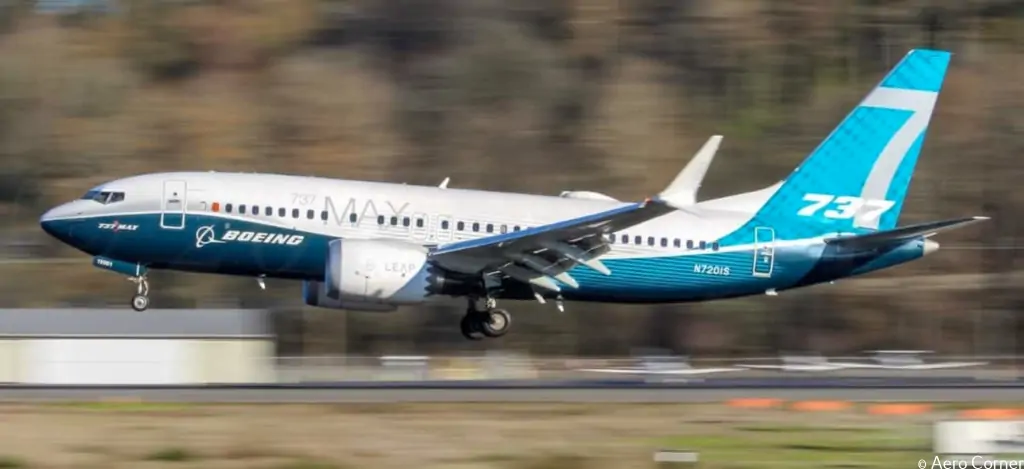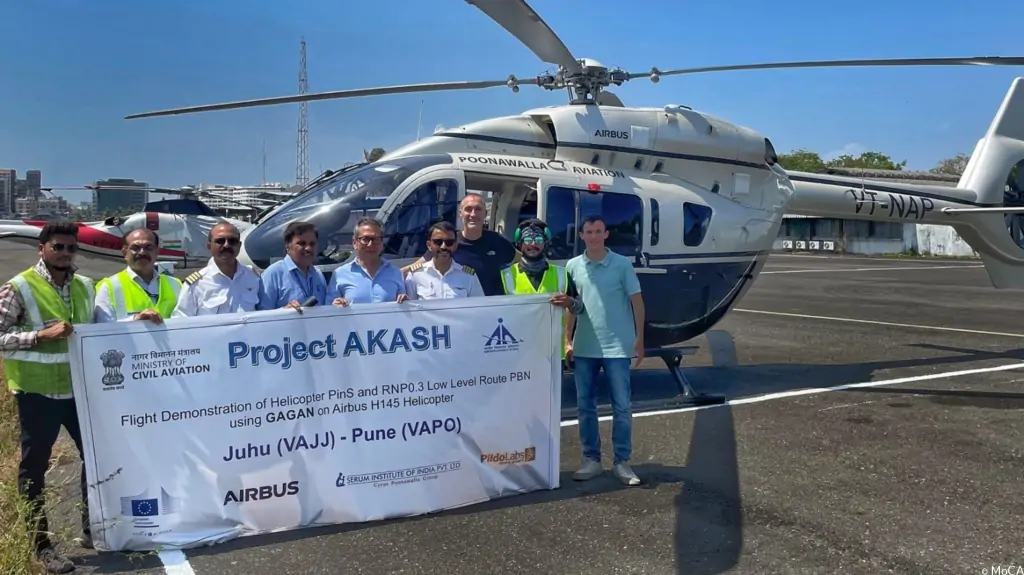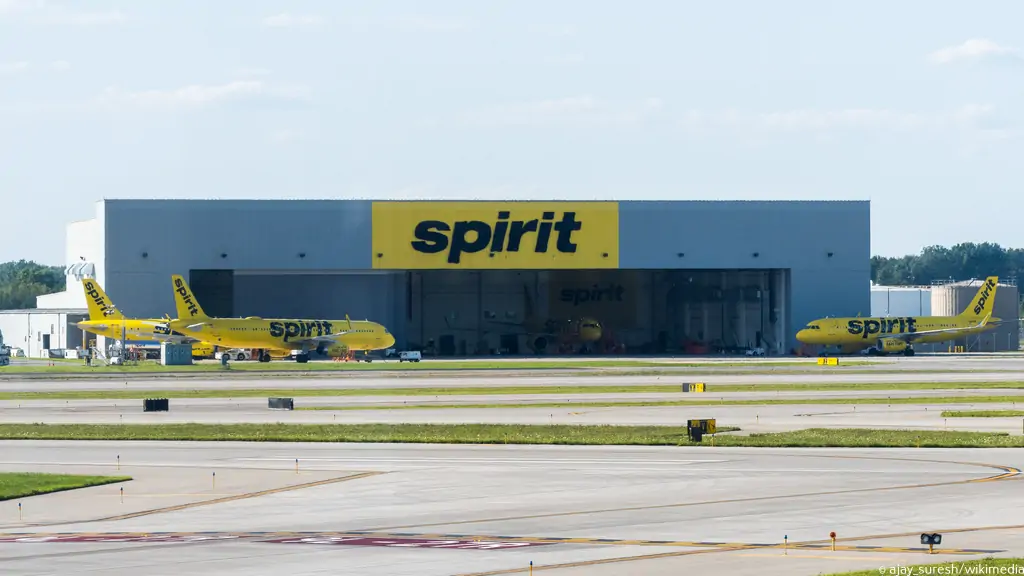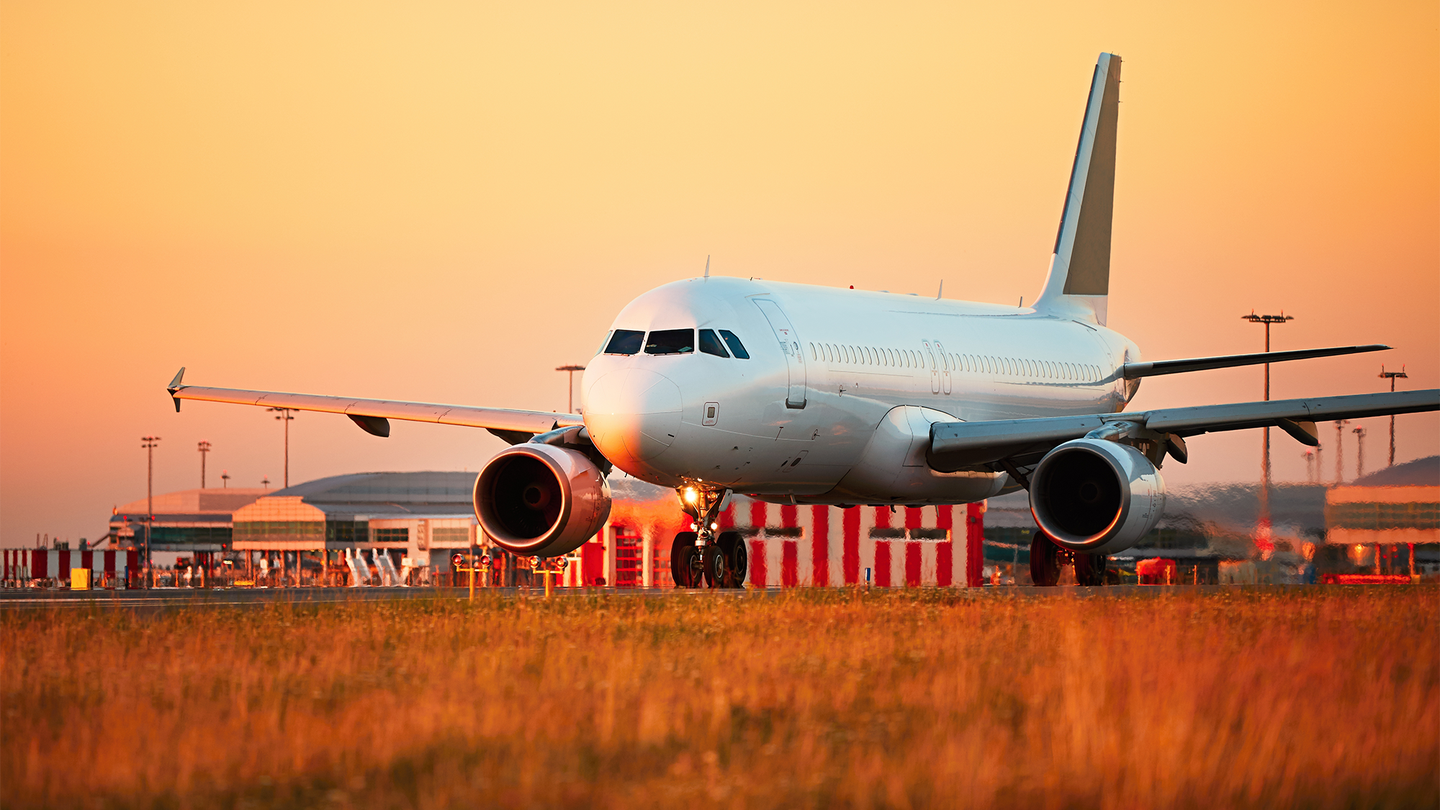On a daily basis, millions of people utilize air travel to commute to distant locations and facilitate business and leisure activities. However, unexpected interruptions and technological faults can impair aircraft operations, causing delays and aggravation for passengers. Spirit Airlines is now dealing with similar issues, which are having a substantial impact on its flight schedule and passenger experience.
Situation Analysis
Spirit Airlines is a well-known low-cost carrier that mostly serves the US and Latin America. The airline has gained appeal among budget-conscious travelers due to its affordable fares. Spirit Airlines has a large network that serves numerous destinations in North and South America. Issues with an airline's operating system are not uncommon. While the specific reason for Spirit Airlines' technical issues is unknown, similar situations have occurred in the aviation sector previously. Airlines are subject to technical difficulties due to their complex technological frameworks and interconnection of multiple systems.
Spirit Airlines' Technical Issues
Spirit Airlines announced about 09:00 Eastern Time that its mobile application was experiencing issues and that airport kiosks were also affected. The announcement warned travelers of potential challenges and advised them to arrive at the airport early. Despite this early message, the technical issues persisted, causing substantial interruptions to the airline's operations.
Passenger Reactions and Experience
Spirit Airlines' technical issues undoubtedly caused dissatisfaction and inconvenience for its passengers. Travelers who expected a seamless flight were confronted with delays and cancellations, disturbing their plans, and perhaps compromising their obligations at their destinations. Such delays can be especially unpleasant for people who have important appointments or connecting flights.
Response and Mitigation Measures of Spirit Airlines
Spirit Airlines actively provided information and engaged with affected passengers in response to the technical concerns. Despite the interruptions, the airline advised travelers to arrive at the airport early to account for potential delays. Spirit Airlines intended to minimize customer disruption by keeping open channels of contact.
The Reputation of Spirit Airlines
Flight interruptions caused by technical faults can have far-reaching consequences on an airline's brand. Passengers expect consistent service and on-time departures, and any disruptions can undermine their faith and loyalty. Furthermore, such instances allow rivals to demonstrate their dependability and maybe recruit unhappy clients.
Resolution and Future Prevention Measures
Spirit Airlines will most likely do extensive technical troubleshooting to remedy the current technological difficulties and prevent such accidents in the future. Identifying the root cause and carrying out the necessary updates or changes will be critical to establishing a more resilient system. Furthermore, examining processes and contingency plans can help the airline manage such circumstances more efficiently and with less impact on customers.
Conclusion
Spirit Airlines faced considerable difficulty today as a consequence of technical failures, resulting in extensive delays and a few aircraft cancellations. The airline responded by informing passengers of developments, offering accommodations, and resolving compensation as needed. Such occurrences, however, can have a long-term influence on an airline's image, emphasizing the significance of preventing and addressing technological challenges in the future.
With Inputs from FlightAware
Read next
Noida Airport to Get a Multi-Modal Cargo Hub; Deal Signed Between AISATS & YIAPL
Radhika Bansal
02 Jun 2023

Air India's joint venture firm AISATS and Yamuna International Airport Pvt Ltd announced signing a concessionaire agreement for a multi-modal cargo hub at the upcoming Noida international airport which is expected to be operational in 2024. As part of the plan, Air India SATS Airport Services Private Limited (AISATS) will design, build, finance and operate the cargo hub, which is expected to come up on 87 acres of land and provide quick, convenient and intermodal connectivity to and from manufacturing hubs across the country.
Through this facility, AISATS aims to provide India's logistics sector with a cargo processing and transportation grid that will help reduce logistics costs significantly, streamline processes for seamless coordination, and bring speed and transparency to the country's supply chain, according to a release.
"The AISATS cargo hub at Noida will play an integral part in providing just-in-time cargo facilities for the north India region and will support in levelling up the Indian logistics and air cargo sectors with infrastructure, value-added services and improved cost efficiency," said Nipun Aggarwal, Chairman of AISATS.
The strategic location of this first-of-its-kind cargo hub will seamlessly connect multiple modes of transportation with consolidated ancillary and value-added services, establishing a highly efficient route for cargo throughput across India and abroad, AISATS said.
"India is one of the world's fastest-growing economies with huge opportunities for growth in the air cargo logistics space. Establishing an integrated logistics gateway in Noida through our AISATS joint venture with Tata Group's Air India will help develop the region into a strategic air cargo and export hub," said Bob Chi, CEO of SATS Gateway Services. "Such a development also accelerates the expansion of our global air cargo hub handling capabilities as part of SATS' twin-engine growth strategy," he added.
The hub will provide a Coolport for handling temperature-sensitive cargo such as perishables and pharmaceuticals, along with separate domestic and international cargo terminal zones and dedicated courier terminals to handle express courier shipments.
Additionally, the MMCH will house a bulk utilisation program (BUP) facility for integrators and global forwarders, the AISATS said, along with a consolidation centre for freight forwarders and agents, a customs-controlled warehouse, a logistics park for e-commerce players and 3PL warehouses, and a trucking centre with world-class parking amenities.
Through this facility, AISATS aims to provide India's logistics sector with a cargo processing and transportation grid that will help reduce logistics costs significantly, streamline processes for seamless coordination, and bring speed and transparency to the country's supply chain, according to a release.
The company's technology-driven solutions such as a cloud-based cargo management system for end-to-end cargo tracking, reporting and network connectivity will benefit all stakeholders.
The company will also provide a single-window cargo community system to enable more efficient communications and a smart warehouse with technologies such as automated dimension scanners, conveyors, radio frequency identified trackers, autonomous vehicles, and video analytics-based monitoring.
AISATS is a 50:50 joint venture between Air India Ltd and SATS Ltd. The concession agreement was signed between the CEOs of AISATS and YIAPL Christoph Schnellmann and Sanjay Gupta on May 30 in Noida. The upcoming airport lies southeast of central Delhi, Gurgaon, and Noida and is almost at the halfway point to Agra.
Yamuna International Airport Private Ltd, a Zurich Airport International AG subsidiary, was established for the development, construction and operation of the greenfield project - the Noida International Airport. In its initial phase, which is expected to be operational by the end of 2024, the airport will feature one runway and one terminal and handle a capacity of 12 million passengers.
The airport, billed to be India's largest upon completion, will be developed in four phases, with two interconnected terminals and an annual passenger capacity of 70 million. The first phase spread over 1,334 hectares will have one runway, a cargo hub, and a terminal that will cater to domestic and international passengers. Per the concession agreement, the first phase for 12 million passengers per annum is to be completed and operational by September 2024.
The Noida airport is being developed by Yamuna International Airport Private Limited (YIAPL), a wholly-owned subsidiary of Zurich Airport International AG, in partnership with the state government. Zurich Airport International AG won the bid to develop Noida International Airport in 2019 and the concession period officially commenced on 01 October 2021. Following the ground-breaking ceremony by Prime Minister Narendra Modi in November 2021, the first phase of the airport is on track to open in 2024.
Read next
The Airbus A380 is the world's largest passenger aircraft, distinguished by its impressive size, luxurious amenities, and exceptional passenger capacity. Its reintroduction to the Lufthansa fleet represents a significant shift in the airline's strategy and illustrates the industry's slow recovery from the pandemic's severe effects.
The Airbus A380's History
Airbus originally debuted the A380, a double-deck, wide-body aircraft, in 2005. It was designed to accommodate an immense number of passengers, featuring spacious cabins and luxurious amenities. The A380 soon drew notice due to its outstanding size and capabilities, becoming the world's largest passenger aircraft. Several airlines, like Lufthansa, embraced the A380 and incorporated it into their fleets, hoping to provide their passengers with exceptional comfort and a one-of-a-kind travel experience.
Reasons for the Airbus A380's fall in demand
Despite early enthusiasm for the Airbus A380, demand for the aircraft has progressively diminished over time. The shifting dynamics of the aviation sector were one of the key causes of this collapse. Airlines began to choose smaller, more fuel-efficient aircraft capable of operating on long-haul flights with fewer passengers. The A380's large size and hefty operational expenses rendered it less economically viable, especially as fuel prices rose.
COVID-19's Impact on the Aviation Industry
The COVID-19 epidemic caused havoc in the aviation sector, resulting in a major decline in global air travel demand. Airlines had to halt their fleets, resulting in significant financial losses. The epidemic hastened the demise of the Airbus A380 as airlines struggled to load such a big aircraft with much fewer passengers. Operating costs for the A380 grew even more costly, causing several airlines to retire or temporarily park their A380s.
The Decision by Lufthansa to Relaunch the Airbus A380
Despite the obstacles provided by the epidemic, Lufthansa took the risk of reintroducing the Airbus A380 into its fleet. Recognising the potential for a revival in air travel demand as limitations were lifted, Lufthansa recognised an opportunity to give its passengers an exceptional travel experience. With its large cabins, greater comfort, and superior operating skills, the German airline trusted in the A380's capacity to reclaim the market.
After Three Years, The First Commercial Flight
The Airbus A380 with the registration D-AIMK took to the skies on June 1, 2023, marking Lufthansa's first commercial flight with the aircraft in three years. LH424, the flight, took off from Munich Airport (MUC) and was headed to Boston Logan International Airport (BOS). Passengers crowded onto the plane, eager to experience the A380's grandeur and greater in-flight facilities. The event was a watershed moment for Lufthansa and the aviation industry as a whole.
The Positive Aspects of the Airbus A380
Despite its difficulties, the Airbus A380 remains a unique aircraft with some outstanding advantages. Its expansive cabin allows passengers to walk about freely, eliminating the sense of suffocation on long-haul excursions. The enhanced technology and soundproofing of the A380 contribute to a more peaceful and comfortable travel experience. Furthermore, the aircraft's fuel economy has increased over time, giving it a more environmentally friendly option than earlier wide-body aircraft.
Conclusion
After more than three years, the return of the Airbus A380 to Lufthansa's fleet signals a positive and optimistic turn for the aviation sector. While the pandemic and shifting market dynamics offered substantial hurdles, Lufthansa's decision to relaunch the A380 shows its confidence in its distinctive appeal and long-term profitability. As air travel improves, the Airbus A380 might become an iconic emblem of luxury and innovation in the sky once more.
With Inputs from AeroTime
Read next
Boeing Claims The Certification Process for B737 MAX 7 is Taking "Considerable Time"
Radhika Bansal
01 Jun 2023

Boeing is still not fully satisfied with the Boeing 737 MAX 7 certification process. A company executive said on Wednesday that although the certification of the Boeing 737 MAX 7 is taking a "considerable amount of time" because of new documentation requirements, the planemaker still believes it can be certified by the end of the year.
For Boeing to compete with Airbus for orders at the larger and smaller ends of the narrowbody market, the MAX 7 and MAX 10 are both seen as essential. Southwest Airlines was expected to accept the first MAX 7 this year, although the airline's CEO has noted plans to put the aircraft into service could be delayed until 2024.
Boeing is readying the final "handful of documents" required by the Federal Aviation Administration (FAA) as it proceeds through the regulatory process necessary to approve the 737 MAX 7 to enter service, Mike Fleming, Boeing's senior vice president for commercial development programs, told a press briefing.
The planemaker is also "close" to receiving FAA approval to begin certification flights of its new longer 737 MAX 10, Fleming told reporters. Certification of that aircraft is still projected to occur in 2024, but will depend on when Boeing is approved to begin those flights, he said. "The amount of documentation that we're producing on these airplanes relative to what we had to produce in the past is considerably much larger than it has been," Fleming said.
Asked about Boeing's comments, the FAA said “Safety will dictate the timeline. We do not comment on ongoing certifications." Congress in December exempted the MAX 7 and MAX 10 from a new safety standard for modern cockpit alerts that applied to all planes certified after late 2022. The requirement had been imposed by Congress in 2020 after two fatal 737 MAX crashes killed 346 people in Indonesia and Ethiopia.
Boeing Ups 787 Dreamliner Production Rate
Boeing has chosen to increase the monthly production rate of its 787 Dreamliner from three to four aircraft. This increase will enable the corporation to satisfy current demand while also reducing order backlogs. Boeing, on the other hand, has even more ambitious plans for the future, hoping to increase production to five jets per month by the end of the year. After producing Dreamliners at a slower pace earlier in the year, the firm stated in April that it had stabilized 787 productions at three aircraft per month. The decision to boost production is based on market data and consumer feedback, which show that the 787 Dreamliner is in high demand. Boeing can better meet the demands of its customers and secure its market position by increasing output. Boeing has stated that it intends to deliver 70 to 80 of these aircraft in 2023.
Boeing and its stakeholders will benefit from the decision to boost production in various ways. For starters, it enables the corporation to satisfy growing client demand for the 787 Dreamliner. Airlines are looking for more efficient and comfortable aircraft, and the technological features of the Dreamliner make it an appealing option. Boeing can ensure timely delivery and customer satisfaction by increasing output. Furthermore, increased production will benefit Boeing's financial performance. As more aircraft are delivered, the corporation generates additional revenue and improves its profitability. This increases its market position and provides the resources required for future research and development initiatives.
(With Inputs from Reuters)
Read next
India Conducts Asia First Navigation Demonstration for Helicopters Using GAGAN Technology
Radhika Bansal
01 Jun 2023

India conducted Asia's first demonstration of performance-based navigation for helicopters for a flight from Juhu to Pune using GAGAN satellite technology. It was jointly developed by the Indian Space Research Organisation (ISRO) and the Airports Authority of India (AAI). It also utilised the Low-Level Route (LLR RNP0.3) with the assistance of the GPS Aided Geo Augmented Navigation (GAGAN) system.
In a tweet on Wednesday, Civil Aviation Minister Jyotiraditya Scindia said it is a fine example of the "Indian aviation sector blazing a trail in innovation!". "India conducts Asia's first demonstration for Performance-Based Navigation for helicopters. The flight from Juhu to Pune made use of the #GAGAN satellite technology that enhances accuracy, allowing for high-quality air traffic management. Congratulations @AAI_Official," the minister said.
The tweet added that the successful validation of this technology demonstrates the commitment made during the 4th Heli-India Summit for Project AKASH, which aims to establish safe and efficient air corridors using the advanced features of GAGAN.
What does the LLR RNP0.3 route indicate?
The LLR RNP0.3 route refers to the Low-Level Route with a Required Navigation Performance (RNP) specification of 0.3. RNP is a navigation specification that ensures aircraft can fly precisely along a predetermined flight path with a specified level of accuracy. The RNP value represents the lateral navigation accuracy in nautical miles. The LLR RNP0.3 route indicates that helicopters flying on this route must maintain a navigation accuracy of 0.3 nautical miles, allowing for precise and reliable navigation at low altitudes. The LLR RNP0.3 route is specifically designed to support helicopter operations, providing them with a designated and optimized flight path for efficient and safe travel.
About GAGAN
GAGAN refers to GPS Aided GEO Augmented Navigation. It is a space-based augmentation system for providing the best possible navigational services over the Indian FIR (Flight Information Region) with the capability of expanding to neighbouring FIRs. The satellite technology helps aircraft/ helicopters with guided landing at airports that do not have instrument landing systems for low-visibility operations. All registered aircraft in India will have to comply with GAGAN — which was introduced in 2019 — by December 2025.
The technology is designed to provide the additional accuracy that is needed to give users the option to rely on GPS for all phases of flight, that are en route through approach for all qualified airports within the GAGAN service volume.
The GPS-aided GEO augmented navigation (GAGAN) is an implementation of a regional satellite-based augmentation system (SBAS) by the Government of India. It is a system to improve the accuracy of a GNSS receiver by providing reference signals. The Airports Authority of India (AAI)'s efforts towards implementing operational SBAS can be viewed as the first step towards introducing modern communication, navigation and surveillance/air traffic management system over the Indian airspace.
The project has established fifteen Indian reference stations, three Indian navigation land uplink stations, three Indian mission control centres, and the installation of all associated software and communication links. It will be able to help pilots to navigate in the Indian airspace with an accuracy of 3 m (9.8 ft) This will help land aircraft in marginal weather and difficult approaches like Mangalore International and Kushok Bakula Rimpochee airports.
The INR 774 crore project was created in three phases through 2008 by the Airports Authority of India with the help of the Indian Space Research Organisation's (ISRO) technology and space support. The goal is to provide a navigation system for all phases of flight over the Indian airspace and in the adjoining area. It applies to safety-to-life operations and meets the performance requirements of international civil aviation regulatory bodies.
Read next
The civil aviation ministry has come out with a draft bill for putting in place a simplified approach to regulations in the aviation sector. The Draft Aircraft Bill, 2023, has been prepared after reviewing the existing Aircraft Act, 1934.
As per the preamble of the Draft Aircraft Bill, 2023, it aims to have an Act to make better provisions for regulation and control of the design, manufacture, possession, use, operation, sale, import and export of aircraft and connected matters. The bill has been issued by the ministry for public consultations for 30 days, according to a communication dated May 30.
"The existing Aircraft Act, 1934 has been reviewed and accordingly a bill providing for regulating provisions in a simplified manner, identifying existing redundancies and to provide for provisions to meet the current needs for regulation of civil aviation in a simplified language...," the ministry said.
According to the preamble, it is expedient to make better provisions for regulation and control of the design, manufacture, possession, use, operation, sale, import and export of aircraft and matters connected in addition to that or incidental thereto, and to remove the redundancies in the Aircraft Act, 1934.
India is one of the fastest-growing civil aviation markets in the world. It's been predicted that by 2024, India will be the third largest aviation market in the world.
Objectives and Purpose of the Act
Regarded as the basic or fundamental law of aviation in India, the Aircraft Act, of 1934 was adopted to increase the aviation industry's safety and security. In India, it is the foremost statute to regulate civil aviation. The provisions of the regulation predominantly cover every facet of civil aviation navigation.
The purpose of the Aircraft Act, 1934 is “to make better provision for the control of the manufacture, possession, use, operation, sale, import and export of aircraft.”3 Further, the Act grants or vests the power of the governmental authorities to formulate rules and laws concerning civil aviation in India. Moreover, requiring considerations for effective, maintenance of aircraft, airworthiness, registration of aircraft, common situations for flying and safety, and the conduct of inquiries in case of any inconsistency.
One of the objectives of the Act is to provide secure and safe aircraft operations to be carried out by the State. Thus, this is the reason behind vesting the government with enormous powers. The Aircraft Act, 1934 also covers under it the issue of maintenance, development as well as operations of all kinds of airports including the Greenfield airports.
Moreover, to regulate air transport, air safety, and airworthiness standards as well as for the enforcement of civil air regulations, the Act has appointed the director general of civil aviation as the regulatory body to deal with these concerns of civil aviation.





Comment